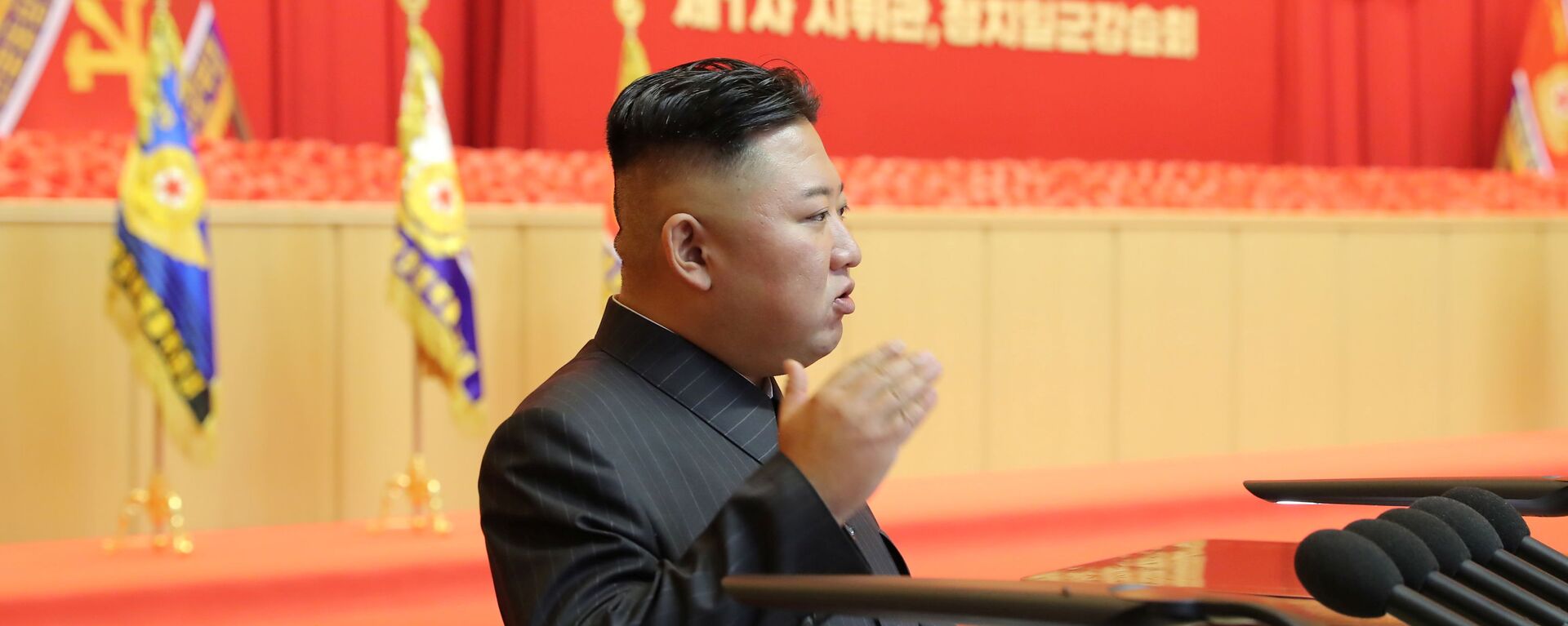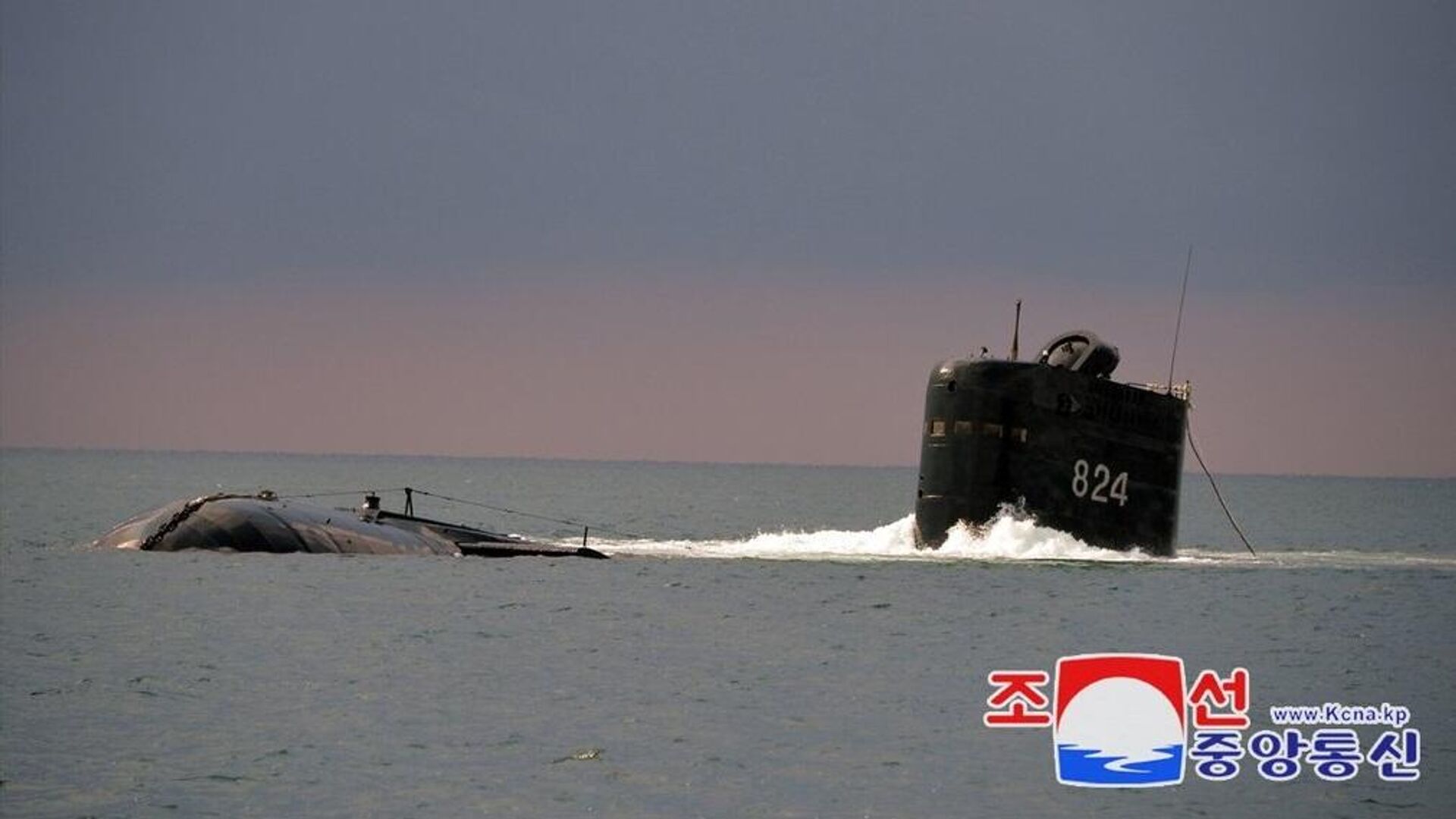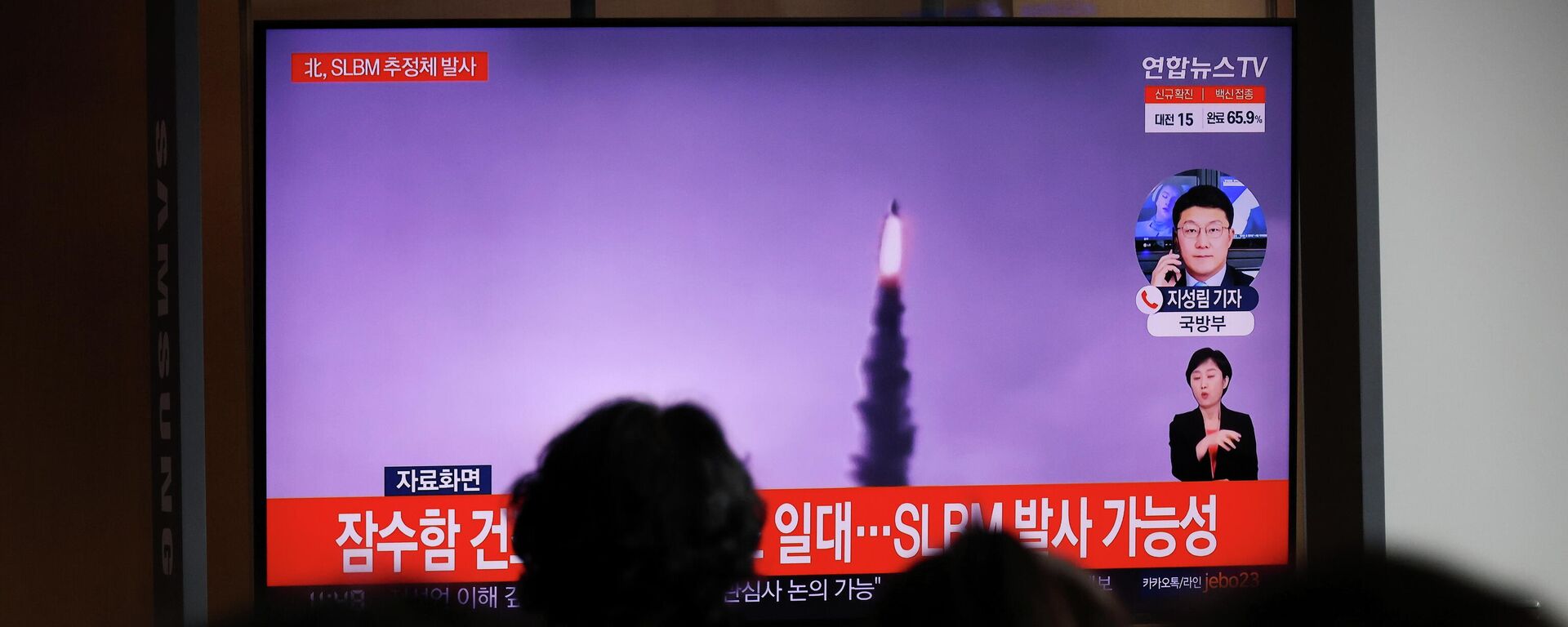Pyongyang Points to US ‘Double Standards’ in Wake of Sub-launched Ballistic Missile Test
13:29 GMT 21.10.2021 (Updated: 13:34 GMT 18.09.2023)
Subscribe
Pyongyang has confirmed that it carried out a successful test-launch of a “new” type of submarine-launched ballistic missile (SLBM) from the 8.24 Yongung submarine on 19 October. The test – the first of its kind in five years – led to a fresh escalation of tensions between North Korea on one side and the US, South Korea, and Japan on the other.
Pyongyang has urged Washington not to “trouble itself” over its recent SLBM test, and suggested that US criticism of the Democratic People’s Republic of Korea’s testing of a missile class that America already possesses constitutes the height of “double standards.”
“It truly concerns us that the US is showing abnormal reactions to the exercise of the right to self-defence which is proper and just to a sovereign state. As clarified, the DPRK’s deterrent does not aim at a specified state or forces, but is for preventing war itself and defending sovereign rights,” a North Korean Foreign Ministry spokesperson told the Korean Central News Agency on Thursday.
“When carrying out the recent test-firing, we did not have the US in mind nor were we aiming at it. This was work which had already been planned purely for the defence of the country. So there is no need for the US to worry or trouble itself over the test-firing,” the spokesperson stressed.
“To criticise the DPRK for developing and test-firing the same weapons system as the one the US possesses or is developing is a clear expression of double standards, and only excites our suspicion about the authenticity of its statement that it does not antagonise the DPRK,” the Foreign Ministry representative warned.
The spokesperson suggested that tensions on the Korean Peninsula would ease if the United States ended its opposition to the DPRK’s “regular and legitimate exercise of [its] sovereign rights,” and emphasised that Pyongyang has “already expressed strong concern over the fact that the US and the [United Nations Security Council] are tampering with a dangerous ‘time bomb.’”
‘Threat to Peace’
In the wake of the 19 October missile test, Washington accused Pyongyang of posing a “threat” to regional peace and stability, and called an emergency meeting of the Security Council together with Britain to discuss the test launch. The closed-door meeting took place on Wednesday. No joint communique was issued, and China called on all parties in the region to “exercise restraint,” “commit to safeguarding peace and stability on the Peninsula” and engage in talks.
White House Press Secretary Jen Psaki called on the DPRK “to refrain from further provocations and engage in sustained and substantive dialogue,” and warned that America’s “commitment to the defence of the Republic of Korea and Japan remains ironclad.”
The State Department, meanwhile, suggested that the test fire was a “violation of multiple UN Security Council Resolutions.”
US Indo-Pacific Command said the launch did not pose an immediate threat to US territory or personnel, or those of its allies, but similarly condemned the test and called on Pyongyang to “refrain from any further destabilising acts.”
Missile Power
Tuesday’s SLBM test was the first of its kind since April 2016. The missile in the latest test, said to be of “a new-type SLBM,” reportedly flew about 430-450 km, reaching an altitude of 60 km, and splashing down in international waters outside Japan’s exclusive economic zone.
KCNA boasted that the new SLBM features “advanced control guidance technologies including flank mobility and skip-glide mobility,” and that it would “greatly contribute to putting the defence technology of the country on a higher level and enhancing the underwater operational capability of the Navy.”
Pyongyang’s statement Thursday is the second time this month that the DPRK has accused the United States and other powers of double standards over its missile tests. On 3 October, Jo Chol Su, director of the North Korean Foreign Ministry’s department of international organisations, accused the Security Council of “open ignorance and wanton encroachment” on Pyongyang’s sovereign rights while remaining silent on US military activities and weapons tests with allies.

12 October 2021, 06:36 GMT
North Korean, South Korean, and US officials have signalled agreement to work to improve inter-Korean communications amid escalating tensions. Relations between Pyongyang and Washington sunk to new lows after President Joe Biden’s inauguration and the collapse of the strong personal rapport formed between North Korean leader Kim Jong-un and President Donald Trump during the latter’s presidency. Biden helped to set the stage for worsened ties by criticising Trump on the campaign trail over his meetings with Kim, and by characterising the North Korean leader as a “thug” and a “tyrant.” North Korea responded by calling Biden an “imbecile” and a “rabid dog” that “must be beaten to death with a stick.”
North Korea has is reported to have tested at least seven missiles this year. Last month, the country test-fired a new hypersonic glider vehicle mounted aboard a Hwasong-8 intermediate-range ballistic missile (IRBM). Before that, the country tested a new missile launched from aboard a train car, and a long-range cruise missile.
Hwasong-8: three ways. pic.twitter.com/w2HukUCSlh
— Ankit Panda (@nktpnd) October 12, 2021
North Korea insists that its weapons are aimed strictly for the defence of its sovereignty and territorial integrity in the event of foreign aggression. The country has signalled a willingness to scale back its missile and nuclear activities if the US were reduce its military footprint and drills with South Korea on the Peninsula, but has rejected out of hand demands for the complete elimination of its nuclear deterrent.


